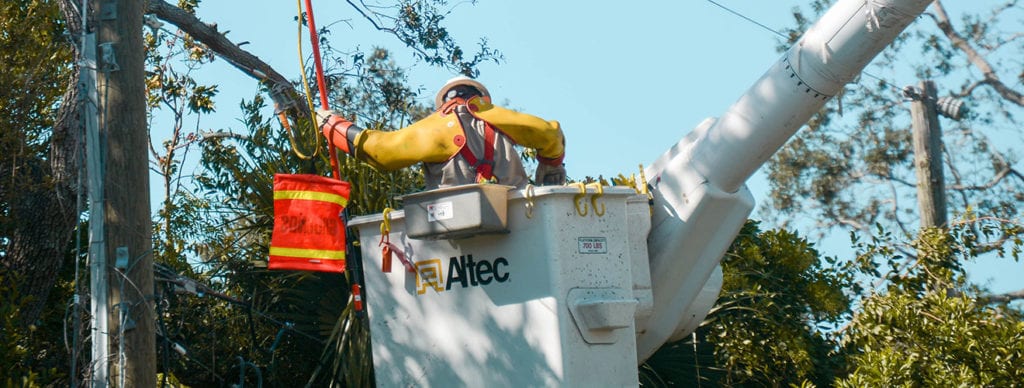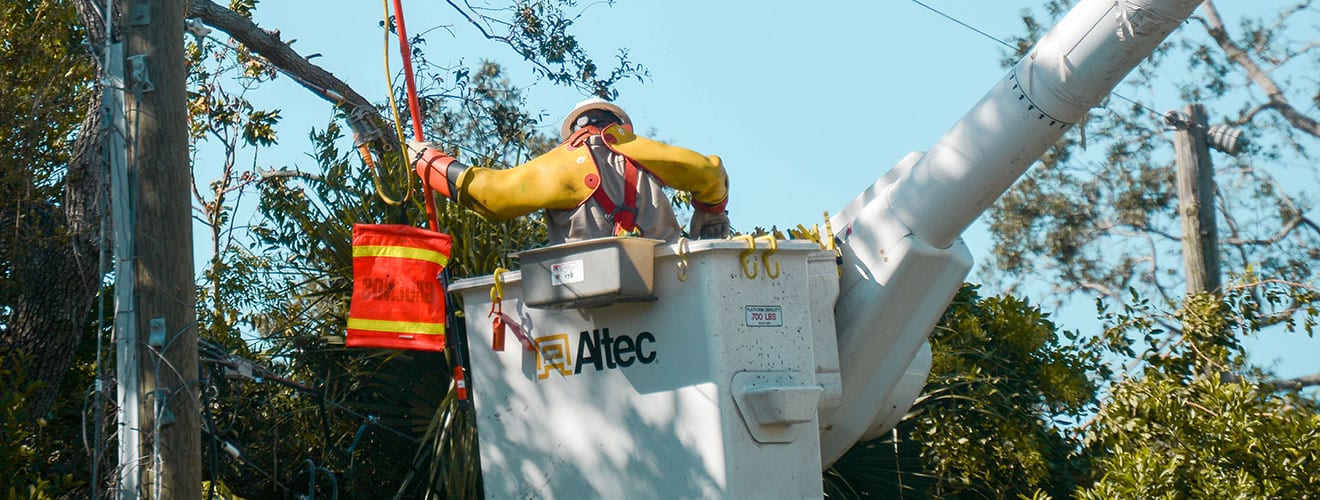During the past six months I’ve had the opportunity to meet, interact with and listen to many GE utility customers, partners and analysts. From these industry events, user conferences and meetings a few key themes have emerged. Here are my top five:
1. Storm Response and Outage Restoration Are a Top Priority
There is little question that in many countries, outages are becoming more common and more prolonged due to the intersection of more frequent and intense storms, aging grid infrastructure, and workforce challenges. Utilities are making heroic efforts — following Hurricane Irma Florida Power & Light restored power to 4.4 million customers within 10 days, with support from other utilities — but they also recognize that their outage management systems are under strain. Upgrading these systems with modern scheduling and mobility capabilities (and as part of a modular ADMS, or Advanced Distribution Management System) is a clear imperative for utilities seeking to achieve their reliability metrics and customer satisfaction goals.
2. Utilities Want to Be More Proactive
In sharing their MWM strategies utilities repeatedly expressed a strong interest in applying analytics so that they can perform proactive service on (for example) a transformer with identified issues rather than simply react to a failure. In an industry environment characterized by volatile and high-volume work, utilities want to leverage every possible opportunity to be less reactive. In multiple conversations we’ve been asked by utilities for more details about how FSM meshes with APM to trigger proactive asset service.
3. The Cloud is Gaining Traction
In Gartner’s recent Market Guide for Mobile Workforce Management (MWM) for Utilities, Nicole Foust predicts that 50 percent of utility mobile workforce management deployments will be cloud by 2020. Some utilities moving to cloud-based solutions cite the ability to better support the deployment of “complex distributed systems,” such as smart meters and solar panels. Others focus on the more general ability of cloud-based solutions to deliver IT savings, scalability, flexibility and a faster “time to value.”
4. New Grid Use Cases Are Making FSM More Relevant
When Paula Gold of CPS Energy, the host of DistribuTECH’s annual utility conference, asserts that “the future is energy storage” and devotes much of her keynote to plans to install 500 MW of solar, it’s indicative of the changes afoot with a grid that is accommodating more distributed assets. These new grid use cases explain why, as Gartner’s Foust notes, “leading FSM vendors are gaining traction in the utility MWM market.” Solar and battery storage are smarter systems that can involve more complex work than other grid assets. As a result, utility workers need additional mobile enablement (work instructions, collaboration) to work on these assets. Many FSM providers have prior experience with solar and battery systems that they can bring to a utility deployment. Our team is not only leveraging our experience with distributed asset service; we are also integrating our solution with other critical GE utility applications, such as ADMS and GIS, to deliver complete end-to-end solutions for outage response and map-based work.
Solar and battery storage are smarter systems that can involve more complex work than other grid assets. As a result, utility workers need additional mobile enablement (work instructions, collaboration) to work on these assets. Many FSM providers have prior experience with solar and battery systems that they can bring to a utility deployment. Our team is not only leveraging our experience with distributed asset service; we are also integrating our solution with other critical GE utility applications, such as ADMS and GIS, to deliver complete end-to-end solutions for outage response and map-based work.
5. The Digital Utility Worker Concept is Gaining Ground
Gartner’s primary recommendation to Utility CIOs is to “Determine digital field worker needs and contribute to field force business outcomes by partnering with field service leaders to articulate a modern, digital field force strategy.” Utilities with whom we have engaged uniformly agree on this need to modernize work management from stovepipes and silos to a holistic digital worker strategy.
The question is how. We’ve shared our “Deploy, Integrate, Innovate” three-step recommendation in a prior blog and videos and have found it an invaluable starting point in partnering with utilities to execute this strategy.
Utility mobile workforce management has not historically been a fast-changing market, but the secular trends reshaping the industry (distributed generation, aging grids, workforce transitions) are intersecting with technological advances (mobility, geospatial, cloud) to accelerate utility interest in digital innovation and transformation. For an industry that performs mission-critical work that impacts our lives every day, that’s a welcome development.
To learn more about ServiceMax and how Predix ServiceMax works with Predix Grid Asset Performance Management, please visit www.servicemax.com/predix


Share this: